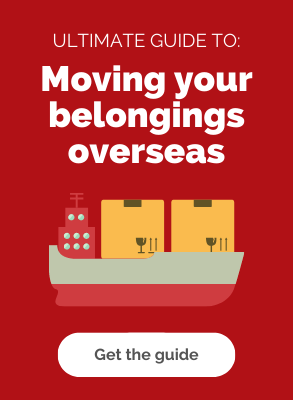Moving to the other side of the world is a daunting prospect – a new home, new jobs and a whole new way of life. But with everything else changing around you, reminders of your old home and life can be a welcome comfort in those first few months, particularly when it comes to having your pets around. If you’re starting to worry about how to get your cat or dog from A to B, then here’s our guide to moving pets to New Zealand…
Moving pets to New Zealand: the basics
Before you even start to think of arranging transportation for your pets, there are a few basic things you need to know. Firstly, not all animals are welcome. New Zealand has strict rules surrounding its biosecurity, so certain animals are strictly forbidden. Birds, reptiles, snakes, ferrets, Guinea pigs, mice and rats will not be allowed entry. And when it comes to dogs, the Brazilian Fila, Dogo Argentino, Japanese Tosa, Perro de Presa Canario and the American Pitbull Terrier are all banned. Horses from certain countries are permitted, however, as are ornamental fish. Chinchillas and rabbits can only be brought in from the UK and Australia, respectively.
You must also bear in mind that any animals you’re intending to move should be more than 16 weeks old and less than 42 days pregnant on the date of your departure.
Medical requirements for moving pets to New Zealand
Because New Zealand is free from many serious diseases, the rules surrounding the health of imported animals are fairly strict. Therefore all cats and dogs entering New Zealand must be treated for rabies and parasites. An up-to-date rabies vaccination is needed at least 6 months prior to travel, while treatment and inspection for internal and external parasites will be required 30 days beforehand. All medical treatments should be carried out by a government approved vet, who will issue the correct paperwork needed for your pets to travel.
Paperwork for moving your pets
Much like moving house, moving pets abroad also involves a certain degree of paperwork. All animals entering New Zealand will need an import permit, which can only be given once you’ve booked a space for your pet at an approved quarantine facility. One permit covers several animals so you only pay once, regardless of how many animals you're moving. You should apply for this at least 6 weeks before the date of your move. Export permits from an approved vet for each animal you’re taking will also be needed.
Things you might also need in addition to the import and export permits include: an invoice or receipt to show the value of the animal, an air waybill or Bill of Lading, vaccination certificates, your own personal identification, a completed Imported Animal Clearance (NZCS 231) form and for dogs specifically, evidence of your dog’s registration in New Zealand and customs documentation to prove that the dog is not a prohibited breed.
Quarantine
All pets coming into New Zealand must spend a period of time in quarantine. Their length of stay will depend upon their country of origin and can range anywhere between 10 and 120 days, though for most the average is around 30. You will be required to pay fees for each pet that you put into quarantine; these will cover the transportation to and from the airport and all the government inspections they require. Upon leaving quarantine, each pet will be issued a biosecurity clearance certificate.
Most quarantine facilities do allow owners to visit their pets, so you’ll be able to check on them regularly during their length of stay.
Advice for transit
Putting your pets through a long haul flight can be incredibly worrying, particularly if they’ve never flown before or aren’t known to travel well by car. However, there are some things that you can do to make things easier for your pets and give you some peace of mind. Firstly, purchase their travel cases well in advance of your move and leave them in the house with the door open. This should encourage your cat or dog to enter them freely and adjust to being inside them comfortably. Secondly, make sure you clip their nails a couple of days before they travel, making sure they're short enough not to catch on anything during transit. Thirdly, don’t be tempted to give your pet a sedative. It might seem like a good idea, but as their effects can alter at high altitude it’s really not recommended. And lastly, once your pets have made their journey and are safely with you in your new home, make sure to keep them indoors or on a leash outdoors for at least a month, to help them adjust to their new surroundings.
Find out more about Moving Pets
For more information and advice on everything from pets to packing or anything else to do with your move, see our Moving to New Zealand home page.

.png)







